New features in ATX 3.0 power supplies (analysis)
We are currently working on a series of power supply tests, from which you already saw a preview with thermal imagery and temperature measurements of the 12pin (a.k.a. 12+4pin) 12VHPWR cables. In this article we will look at what the PSUs produced using this standard have to offer. Even older good quality PSUs can last a long time in several generations of your PC, so what in the ATX 3.0 specification makes it worth switching over?
The ATX 3.0 standard was introduced last year and can be said to be very much a contemporary for Nvidia’s new (or current) generation of graphics cards. Those, due to the increasing TDP of high-end models and perhaps also a somewhat visual-design driven effort to reduce the power supply footprint, decided to switch to a new power supply system first with a 12-pin connector, later modified to 12 pins for power and 4 auxiliary pins using for signalling between the GPU and the power supply. This connector is called a variety of names, 12VHPWR, 12pin, 16pin, 12+4pin or even “ATX 3.0” or PCI Express 5.0 (because the specification of this interface also covers it).
But it’s not entirely the case that this is something enforced by Nvidia, this evolution of the PC power supply standard is a response to general changes in the demands placed on power supplies today. So the benefits of ATX 3.0 (and in the future 3.1) power supplies can be broken down into general features that are relevant to all PCs on one hand and the specific support of this new style of GPU power delivery on the other. The second part is relevant to Nvidia graphics cards for now, while AMD has stuck to the classic power delivery with larger eight-pin connectors. However, it’s quite possible that if the new style catches on, which is probably more likely than the idea being abandoned (like SATA Express or VirtualLink connectors were), competitors will start using it at some point.
Thus, the reason for purchasing a 12VHPWR / ATX 3.0 power supply is not only Nvidia GeForce graphics cards, but also potential future compatibility with next-gen (or next-next gen) Intel Arc and AMD Radeon graphics cards coming out say in 2025–2027.
12+4pin power connector for GPUs (12VHPWR, PCIe 5.0…)
If you want a 12pin (12+4) 12VHPWR connector to power your graphics card, you don’t necessarily need an ATX 3.0 power supply. Often, graphics card manufacturers directly bundle adapters that bridge this cable from standard 8-pins. Alternatively, if you don’t want the extra connector step causing resistance, you can get an upgrade modular cable that routes the 12pin directly out of an older power supply. An ATX 3.0 power supply should be better tested for powering the 12VHPWR cable and be more “tuned” for it, but that doesn’t mean an older power supply can’t be used at all.
ATX 3.0 PSUs are required or recommended to have a 12+4pin connector if their total power output exceeds 450 W. The maximum power this cable can deliver to a graphics card is 600 W, so for weaker PSUs, supplying power may be limited. This is what the four smaller signal wires, characteristic for the 12pin connector, are for. They use simple “coding” based on whether the wire is grounded or not (which can also be implemented the adapters for older “non-intelligent” power supplies).
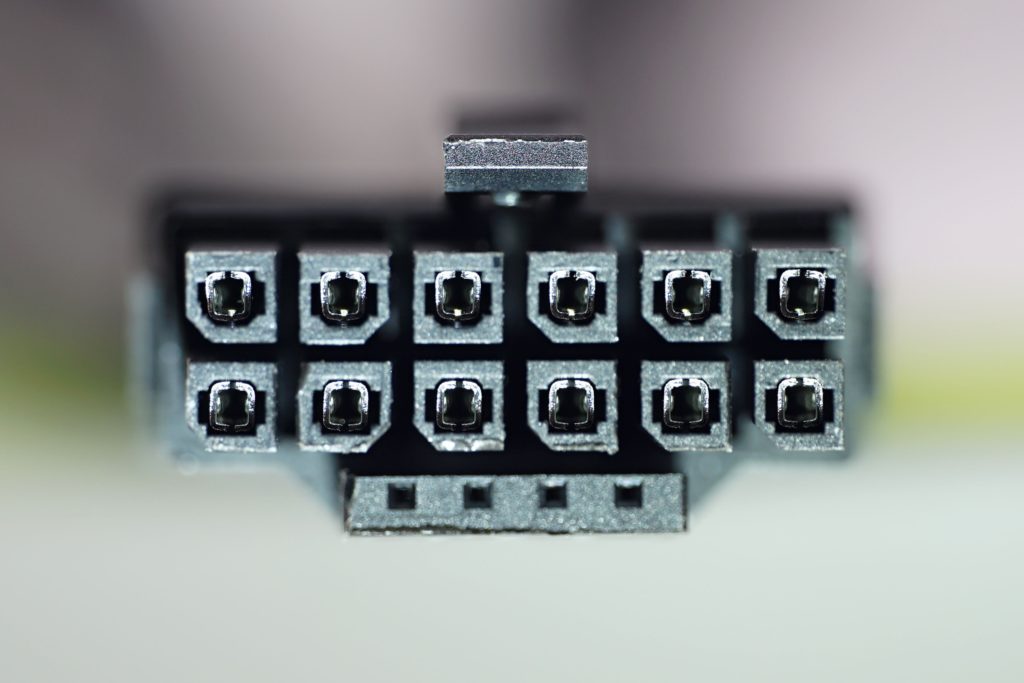
The way these wires are connected tells the graphics card how much capacity the power supply is capable of delivering. It can be 600W or even lower (150W, 300W, 450W), but you’ll probably always find the highest value on gaming power supplies. If the PSU signals a lower power capability than the card requires, it should refuse to power on (or in theory stick to basic lower-power functionality) and thus prevent damage. These signalling (or sense) wires also enable a “Power OK” signal for the GPU and, conversely, allow PSU to detect that the graphics card is plugged in.
It is worth adding that while the maximum allowable input power within the standard is 600 W, there is a separate maximum for current, which is 55 A. This would result in up to 660 W at 12 V. This is presumably to account for the possibility that the 12V rail may allow some undervoltage (voltage drop) within the standard – 55 A will serve 600 W of power at 10.91 V (the standard allows for a +5% to -8% deviation from 12 V). Note: For those lower “wattages” mentioned, the maximum currents are 13.75 A / 27.5 A / 41.25 A.
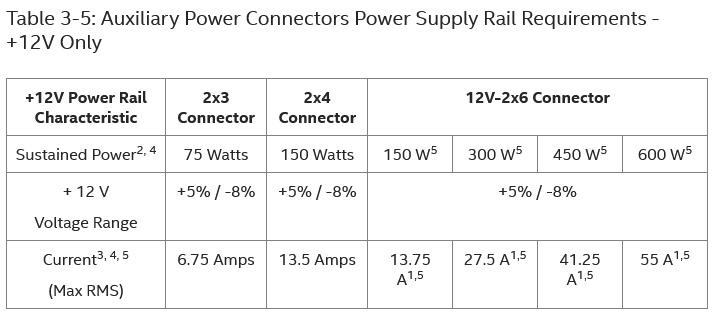
Older or newer connector (12V-2×6 / PCIe 5.1)
These signal pins have been given a new purpose that is officially part of the upcoming ATX 3.1 revision (in parallel in PCIe 5.1), but manufacturers can already include these modifications in power supplies that are officially “only ATX 3.0”. In their original form, 12VHPWR connectors have led to a number of incidents with the GeForce RTX 4090 where they overheated and melted or burned (which typically damages the card’s connector as well). It is thought that most of these were probably due to poor contact due to incomplete insertion (where a reduction in contact area increased resistance and temperature), although it is hard to rule out other causes such as manufacturing defects, connector deformation and anomalies in the contact of the receptacles and pins caused by bending the cable behind the connector. The 12pin connector design is more delicate and probably has less margin and tolerance for mishandling compared to 8pin cables.
The insufficient insertion as a source of problems will be addressed by changing the connector shape, with the four signal pins shortened. When inserting, they will therefore contact “later”. This change is intended to cause the graphics card not to turn on with an insufficiently inserted power connector – protecting against damage and alerting the user to recheck the connection. These modified connectors have officially a new name and are no longer called 12VHPWR, instead they are called the “12V2x6” connector. Graphics cards should be usable with both versions of the connector, with the newer one you have just a little more insurance against those (rare, but still occurring) problems. In newly developed power supplies, the older version of the connector is considered obsolete and manufacturers should fully switch to the 12V2x6 type.
Not just for GPUs: ATX 3.0 tightens power supply quality requirements
So this was the first GPU-specific (now for Nvidia, potentially AMD/Intel in the future) part of ATX 3.0. Now let’s look at the benefits or changes that are instead serving everyone. The ATX 3.0 specification has stricter requirements, so in theory the standards of power supplies should rise, or rather the bar should be raised at the lower end of the quality spectrum. Well designed and over-engineered power supplies predating the ATX 3.0 generation may well have similar specs, but at least for the cheaper ones this may not be the case.
These stricter requirements relate in particular to the ability of the power supply to withstand current load spikes (or so-called power excursions) that exceed the normal input power maxima. These spikes can often be very short and negligible on average, but can be well in excess of the average current. Graphics cards in particular suffer from this (or perhaps better said, are guilty of this): sometimes the power supplied oscillates a lot and nominally 450W GPUs can spike much higher, which then sometimes leads to problems that are hard to diagnose, even with powerful PSUs where you wouldn’t expect an issue with exceeding the PSU’s capabilities. It is likely that in the future, unfortunately, with the overall power hunger of GPUs, but also of CPUs, the amplitudes of these power excursions will continue to grow (although on the other hand, specifying the permitted excursion levels in the ATX 3.0 standard could lead to their “regulation” and GPU maker making sure to stick within this given range from now on).
Current spikes or why does the GPU shut down when the PSU should be “good enough”?
The ATX 3.0 specification responds to this by introducing requirements for handling these spikes, so the PSUs will be tested for them and those mysterious problems with powerful graphics cards should diminish, for example Seasonic states that this standard should improve compatibility with “picky” GPUs (such that stand out out with high power draw spikes).
These requirements did not exist in previous versions of the standard and the ability to handle these short-term excursions above the normal maximum was therefore at the discretion of manufacturers. PSUs with a 12-pin connector must be able to handle exceeding the maximum power draw of the card (i.e. up to that 600 W) by 20% for 100 ms, 60% for 10 ms, 80% for 1 ms and 100% within 100 µs (for such a short period of time, the deviation can be up to 1200 watts!). However, for PSUs of 450 W or less without a 12-pin GPU connector, the requirements are relaxed to only about half (+50% after 100 µs).
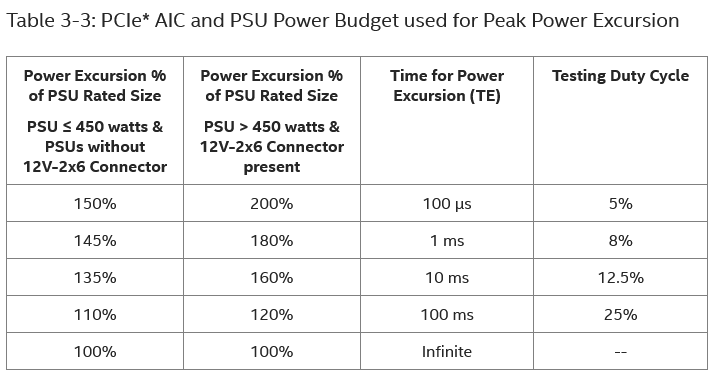
ATX 3.0 spec also increases the requirements for the so-called slew rate during load changes, again this applies to the 12V rail, which powers all the “hungry” components of the PC. The speed should be 2.5× to 5× higher than the previous requirements.
Further changes in requirements
Quite interesting is the requirement that PSUs must be designed to withstand 175,000 cycles of switching off and on. This is motivated by the so-called Connected Stadby or Modern Standby mode, however, if you like to know that a product’s design is intentionally made over-engineered “just in case”, this may be something you’ll appreciate. Also, for the purpose of supporting Modern Standby, there should be an emphasis on faster power-up for ATX 3.0 PSUs (T1 time required to power up the PSU and T3 time, which is the delay until the Power OK signal is reached). These times, according to ATX 3.0 specifications, should be listed in the specs or on the label, so you will have some quantified information about this behavior when you buy the PSU – that is, compared to other ATX 3.0 PSUs that don’t make this public knowledge.
The ATX 3.0 specification should be the first of this series to directly set out certain PSU efficiency requirements. However, they are not very strict, the are more of a very basic baseline – 70% at maximum load , 72% at 50% load and 65% at low (20%) load. If you prefer to buy PSUs with 80+ Gold efficiency, you should always be much better off already. At very low loads (2% or 10W), the spec says efficiency should not drop below 60%; however, it is recommending 70 % instead. Also, 75% efficiency of the 5V standby rail is recommended for currents above 0.55A.
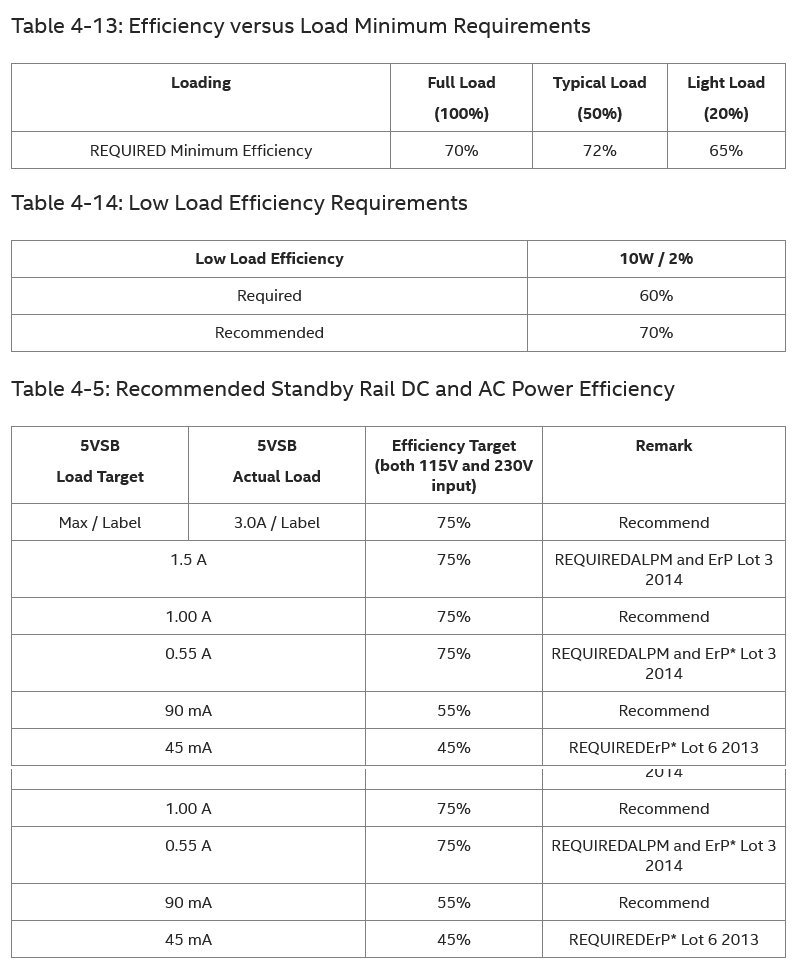
Larger voltage drop tolerance on the 12V rail (power excursions again)
While the requirements for efficiency and ability to handle short-term excesses in hardware power draw have been tightened, there is one area where the ATX 3.0 specification has been relaxed somewhat. Whereas in the ATX 2.x era, the standard prescribed that the 12V rail must hold a voltage to within -5% to +5% of nominal voltage, ATX 3.0 allows for slightly higher undervoltages (but not overvoltages) and increases the range to 12V +5%/-7% for the cables powering the motherboard, peripherals and the CPU. For the 12V rail in the 12VHPWR or 12V2x6 connector (or in the older 8pin or 6pin PCIe connector) the range is set to 12V +5%/-8% (which is probably why the 12pin connector allows up to 55A of current).
These higher tolerances may appear as a downgrade of the standard, however, the increased undervoltage tolerance is explicitly justified by the specification precisely because of the need to handle up to 100% spikes of excursions above the continuous maximum load. Typically, such a spike in current can result in a voltage drop. Therefore, it can probably be argued that if the PSU does not go into these large excursions required by ATX 3.0, it will not exhibit these large voltage drops and everything will be the same business as before.

The ATX 2.x specification did not explicitly consider hardware that would momentarily exceed the continuous power draw maxima in this way (in the sense that it would be explicitly allowed by the specifications for PSUs and PCIe cards), and it is possible that previous PSUs may fall below the 5% undervoltage tolerance in this situation anyway.
For the same reasons, i.e. to allow more room for voltage drop under high load spikes, the ATX 3.0 specification also now states that PSUs can intentionally aim a bit above for the 12 V rail, to target 12.2 V instead of the default nominal value (12 V). This is just to give them more margin for voltage drop during sudden load or current spikes. However, 12.2 V was within the norm even before as well, so this is not some fundamental change, but rather a change in perspective.
Newer specifications for PSUs: Not a necessity, but still a good thing
This article is not meant to be some sales pitch for mass upgrades of PSUs, it is probably clear from the above that the ATX 3.0 standard is not some brand new technology that will change PSUs so much that the new PC requirements will be hard to meet for pre-ATX 3.0 PSUs as it was the case when ATX 2.0 come into being. On the contrary, good quality PSUs are probably often capable of meeting those requirements even if they don’t yet advertise the 3.0 spec (and the missing 12VHPWR / 12V-2×6 cable can be substituted by an adapter).
Standardization within the ATX 3.0 specification, however, will mainly bring more system and order to the handling of spikes. For you, the benefit is that you finally don’t have to research (or perhaps often just be left wondering) whether your exact PSU is one of those forward-looking designs that actually can handle much more than they should on paper; or if it’s the opposite and you bought a PSU type that can’t handle such fluctuations (or maybe it could actually handle them, if it wasn’t for its overload protections intervening aggressively and thus punishing GPUs, that are guilty of those large current spikes).
We think that at least from now on into the future, it makes sense to prefer ATX 3.0 PSUs for new purchases, especially if you’re shopping for a gaming PC. If you’re going to buy a new PSU, it’s now probably highly recommended to get an ATX 3.0 one, given the already pretty extensive use of power delivery via 12pins by graphics cards (all the newer powerful GeForce graphics card models). For less powerful office and HTPC computers on the other hand, there is likely very little need to go ATX 3.0, for now.
English translation and edit by Jozef Dudáš
⠀





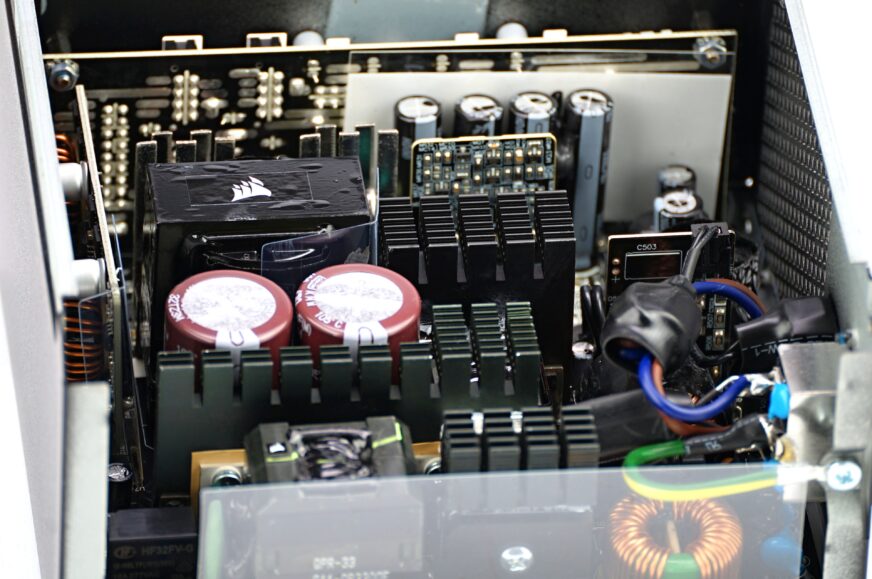
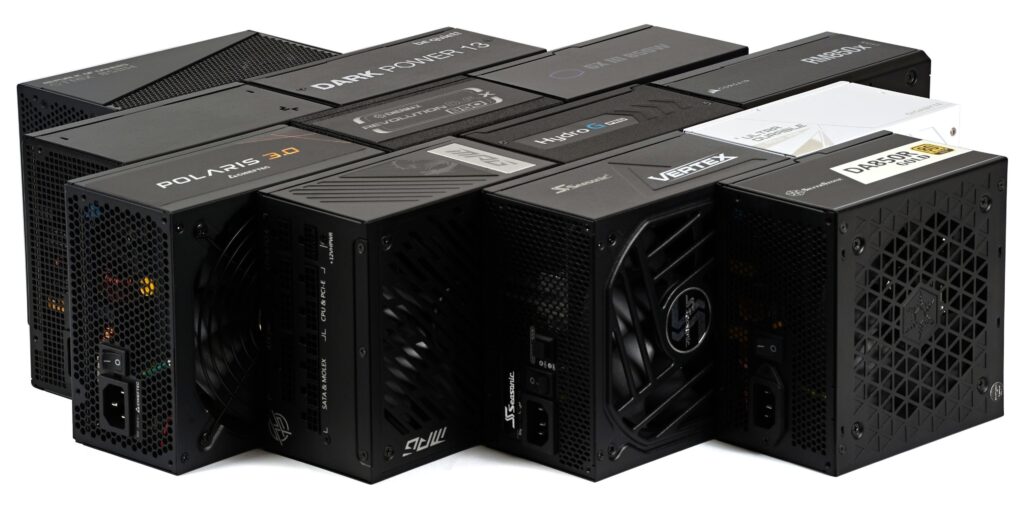



as long as it’s still ATX it’s not gonna change much, we really need a new direction for mainstream computing
to get rid of these bulky plugs, to emphasize power efficiency, silence and reliability, to reduce power limits/targets
in general we really should diverge, HEDT needs modularity, but general purpose home, office and in the most part even gaming PC can be tightly integrated and only benefit from it, as long as prices of higher variants are reasonable there’s no real disadvantage in most cases
To be fair, much of the bulkiness of today’s typical desktop PC is sort of artificial and could be eliminated if there was demand for that (which it seems there is not).
– big clearances for extra fans, AIO radiators,
– PSU position in the bottom of case, particularly when separate “tunnel” compartment is used, this necessitates longer cabling, which in turn leads cases to reserve extra space for this (this all also adds weight)
– of course, full ATX motherboard format
If you pushed desktop PCs to stick to miniITX or mATX (probably more reasonable as long as 2+ slot GPUs are norm) and SFX PSU form factor (which only changes the size, while keeping full ATX 3.0 power delivery specifications and capabilities) mounted closer, with optimised shorter cable lengths, you could retain full modularity in substantially reduced case volumes.
Look at this sort of case (just for example): https://www.chieftec.eu/products-detail/90/BT-06B-250VS
You can get very close to this without fully dumping gaming capability – adding some width and length would allow more powerful GPUs (venting in fresh air right from outside the case through the top panel) while keeping the box small. It would need care to keep cooling and airflow efficient (less of a trouble if we keep GPU and CPU power reasonably low), but basically, what I mean – full modularity scales down pretty well. Today’s general oversizing of gaming desktop builds is kind of “voluntary” rather than forced thing.
At some point, if you need to go smaller, you really want to switch to a NUC like format or mini-STX build (which are without dedicated GPUs but still some modularity) and an external power supply. I don’t think you really gain much by dropping all modularity completely, though (beyond the NUC for factor which retains user-friendly M.2 slots, replaceable RAM slots, optionally things like 2.5″ bay).
I’d say maybe mDTX cases to accommodate for these cards, but in general mITX mobo is more than enough, unfortunately we also need to get rid of ATX power cabling as it’s unnecessarily bulky, and somehow even 12VO isn’t much better, maybe the main plug shrinks a bit but it keeps EPS as is
at this point I’d love to get a motherboard with internal DC power and just shove the brick inside the case
the two main issues with downsizing builds come from high prices of components, low availability (getting mITX mobo for AM5 was basically impossible not so long ago, not sure how it is now), low efficiency and high power limits of components (with CO you may end up losing basically no performance of 7950X when cutting 100W of PPT and it goes even lower with really good results, no idea how well that works for Intel, but I’m sure hitting 6GHz draws tons of power when compared to the performance uplift)
external power supply only works for the lowest power builds when you can fit it in the plug, I despise brick in the middle of the cable approach and these should stay internal, also NUC-style builds generally have low performance and high noise cooling solutions akin to ones used in laptops, often worse (when compared to “gaming” ones for example)
but that’s true, you can get quite small without sacrificing modularity, dimensions wise Metis was quite impressive, you could put quite monstrous components inside, but it severely lacks the airflow, really wish the dual top fan variant was generally available and additionally the floor should’ve had a proper intake instead of 2.5″ mounts, even with just the single fan space at the top it works really well with half height PCB card as long as you keep the power limits in check (probably 200-250W of total power output while staying inaudible from under the desk, if you can live with fans exceeding 1kRPM likely more)
and I know, people are cramming these amounts of heat into much smaller packages, but with much worse acoustic results
dropping modularity doesn’t bring much in terms of sizing but helps with performance and efficiency if you go with RAM on package route, but that’s pretty extreme